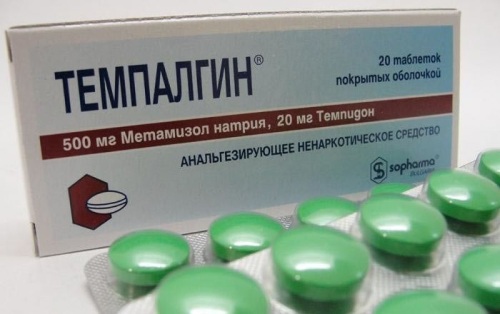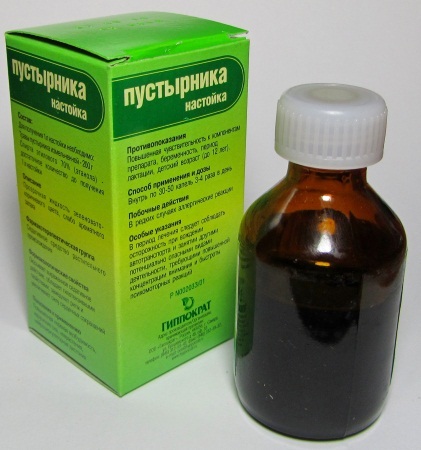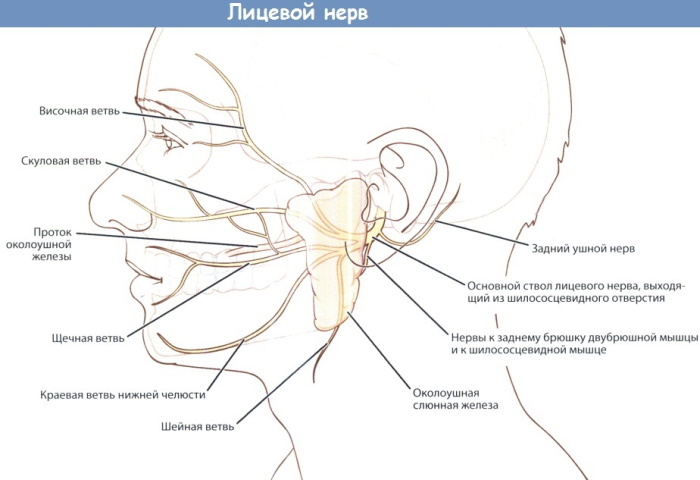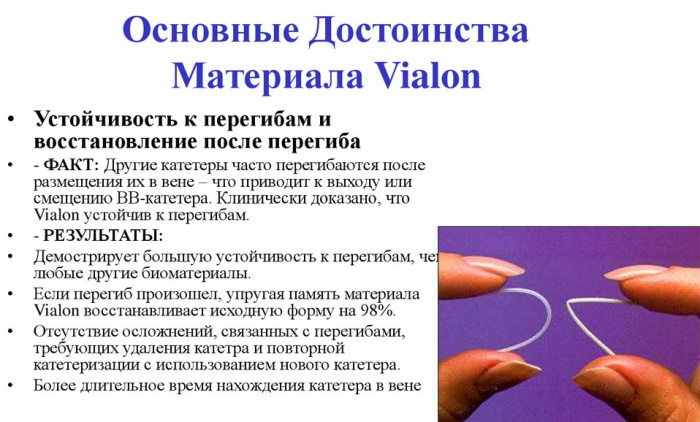Content
- Possible reasons
- Physiological causes
- Algomenorrhea
- Pathological processes and diseases during pregnancy
- Women's diseases
- Inflammatory processes
- Neoplasms
- Pelvic Pain Syndrome
- Pathology of the urinary system
- Appendicitis
- Hernia
- Intestinal infections
- Vascular diseases and pathologies of the gastrointestinal tract
- Intestinal disorders and diseases
- Treatment methods
- Drug treatment
- Therapeutic diet
- Surgical operations
- Physiotherapy methods
- Folk remedies
- Possible consequences and complications
- Video about lower abdominal pain
Bursting pain in the lower abdomen may indicate temporary discomfort or be a symptom of a serious medical condition. More often it is diagnosed in women, since they have a longer list of reasons. Therapy is always complex, aimed at eliminating the factors that provoked pain and alleviating symptoms. In some cases, the treatment can only be surgical.
Possible reasons
Bursting pain in the lower abdomen is diagnosed in men and women due to pathologies of the urinary, digestive and reproductive systems. But in many cases, physiological changes cause symptoms.
Physiological causes
Physiological reasons include pregnancy. During this period, a woman experiences short-term pain in the lower abdomen, of low intensity. They appear due to an increase in the size of the uterus, stretching of the retaining ligaments.
In the second or third trimester, she begins to squeeze adjacent organs, which causes a feeling of fullness in the abdomen. It occurs with flatulence, which often happens during pregnancy. An improperly installed spiral, heavy physical exertion can provoke symptoms.
Algomenorrhea
Bursting pain in the lower abdomen in women often occurs a day before and during menstruation. The most severe spasms are in 1-2 days, then the intensity decreases or disappears altogether. Pain - aching, pulling, bursting, but goes away after analgesics. After this, slight discomfort in the lower abdomen may remain.

With moderate or severe pain, bloating, it can radiate to the lumbar region, small pelvis. This is complemented by weakness (especially in the legs), dizziness, irritability. Stool disturbance is sometimes present. The pain intensifies when bending and turning, sneezing, coughing.
Pathological processes and diseases during pregnancy
The cause of bursting pains can be pathological processes or diseases.
For example, severe symptoms of high intensity during pregnancy sometimes indicate the development of complications or the threat of miscarriage:
- Pain comes on suddenly and can be triggered by abdominal trauma, falling, stress, or heavy lifting.
- With the threat of miscarriage, the symptoms are paroxysmal - often directly above the pubis. At the same time, bloody discharge appears from the genital tract.
- Premature placental abruption. In this case, the pain is dull, aching, increases with palpation. The abdomen becomes tense, hard. The pain can be so severe that the woman faints. Premature placental abruption occurs after 20 weeks of gestation.
- Ectopic pregnancy. Then the aching pain is concentrated in the lower abdomen. There may be hardening of the mammary glands, delayed menstruation, change in appetite.
- Bursting pain occurs with false contractions. This may be normal or a symptom of a threatened miscarriage.
An interrupted pregnancy is accompanied by acute sharp pain in the lower peritoneum. It radiates to the perineum, thigh, lower back. Additionally, brown or bloody clots from the vagina appear.
Women's diseases
Much less often, the cause of pain is prolapse of the uterus, vagina, twisting of the leg of the ovarian cyst or its apoplexy.
A feeling of bloating can be provoked by:
- cysts, polyps;
- when the ovary ruptures, pain occurs on the left or right of the lower abdomen, depending on which one is damaged;
- adenomyosis;
- adhesions;
- stenosis of the cervical canal;
- cervicitis;
- residual ovary syndrome;
- vaginitis;
- genital prolapse.
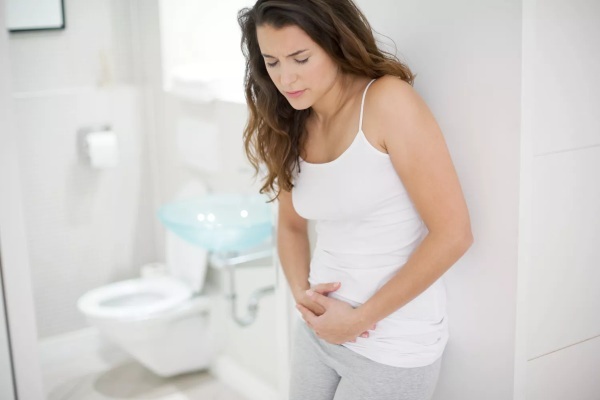
With ovulatory syndrome, pain occurs in the lower abdomen, spreads to the iliac region.
Inflammatory processes
Pain in the abdomen and above the pubis occurs in some inflammatory diseases of the reproductive system - adnexitis, endometritis. During an exacerbation, the symptomatology is paroxysmal or constant, pronounced in the focus of inflammation, but does not have a clear localization. Pain accompanies weakness, a sharp increase in body temperature, clots from the vagina.
In chronic adnexitis, abdominal cramps and pain appear periodically. Symptoms intensify after stress, colds, hypothermia, bacterial and viral infections. Chronic endometritis also manifests itself sporadically, accompanied by pulling bursting pains and a violation of the menstrual cycle. Symptoms are worse during intercourse.
Also, bursting sensations appear with purulent inflammation, abscesses - tubo-ovarian, Douglas space. In endometriosis, the localization of pain depends on the area with the pathological process. But there is always a feeling of fullness in the pelvic area. It is worse before menses. In the first 2-3 days, the pain is very strong, during intercourse it intensifies. Rare pathologies include Crohn's disease, ulcerative colitis.
The cause of bursting pains can be specific gynecological inflammations - diseases that are sexually transmitted. Nonspecific are pathologies caused by pathogenic microflora - intestinal and Pseudomonas aeruginosa, staphylococci, streptococci and other foreign organisms. Other causes are pancreatitis, inflammation of the urea, inflammation of the peritoneum (peritonitis).
Neoplasms
Neoplasms include polyps, cysts, benign and cancerous tumors. All of them are accompanied by bursting pain in the genital area, small pelvis, abdomen (depending on the localization of the process). In women, uterine fibroids are most often diagnosed. With subserous and interstitial pain, dull, pulling. The submucous form causes acute severe spasms.
With the development of cancerous tumors, the pain is localized in the lower abdomen and becomes constant with the growth of the neoplasm. It begins to put pressure on neighboring organs, there is a feeling of fullness, which can spread to the intestines, lower back. In this case, additional clots from the vagina appear.
Pelvic Pain Syndrome
With pelvic pain syndrome, it comes on suddenly. The cause is stress, illness, injury, menstrual irregularities. Bursting pains appear, which can persist for six months. 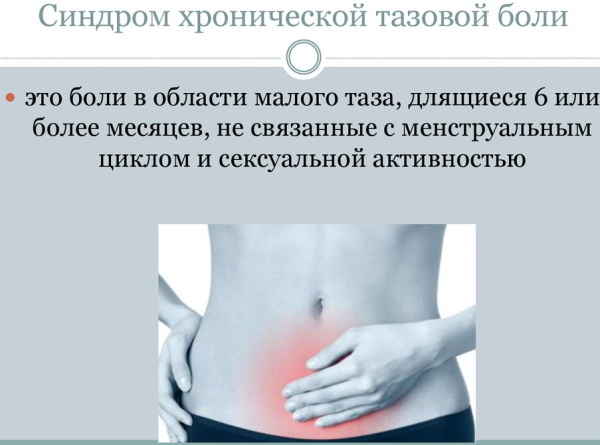 Symptoms are localized in the lower abdomen, in the area of the pubis and perineum. Often the pain radiates to the buttocks and the sensation intensifies.
Symptoms are localized in the lower abdomen, in the area of the pubis and perineum. Often the pain radiates to the buttocks and the sensation intensifies.
Pathology of the urinary system
Bursting pain in the lower abdomen in women appears with cystitis. It is caused by infections, hypothermia. Acute inflammation is accompanied by pain over the pubis. It is of varying intensity - from weak, pulling to bursting, unbearable. When urinating, pain in the lower abdomen also appears.
The urine becomes cloudy with an unpleasant odor. If soreness appears at the end of urination, then this may indicate cystic polyps. Also, bursting symptoms occur with pyelonephritis, bladder cancer.
Appendicitis
With appendicitis, pain occurs on the right, in the iliac region, sometimes above the pubis. The localization of symptoms depends on the location of the appendix. With appendicitis, at first the pain is acute, paroxysmal, gradually becoming bursting. Symptoms are complemented by nausea, vomiting, diarrhea.
Hernia
Bursting pain in the lower abdomen occurs with hernias - spigelian, white and inguinal. Symptoms are aggravated by squeezing the peritoneum, pushing, pinching with a belt. Gradually, the pain becomes constant, and acute attacks indicate an infringement of the hernia.
Intestinal infections
Paroxysmal bursting pains are characteristic of intestinal infections occurring with colitis. Such diseases include campylobacteriosis, shigellosis, yersiniosis, and escherichiosis. The pain is complemented by the urge to defecate, and after a bowel movement, the symptoms disappear for a short time. There can be up to 10 attacks per day, and mucous substance and blood appear in the feces.
Vascular diseases and pathologies of the gastrointestinal tract
Among vascular diseases, bursting pain is caused by varicose veins of the small pelvis, inferior vena cava syndrome. The cause is often gastrointestinal diseases, constipation.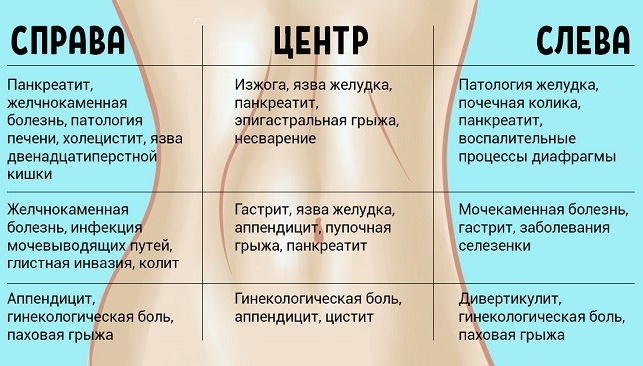 When a person chews food poorly, it enters the stomach in pieces that are poorly digested, the processes of decay, fermentation and flatulence begin. Excessive accumulation of gas causes bursting pain in the lower abdomen. Symptoms usually go away at night.
When a person chews food poorly, it enters the stomach in pieces that are poorly digested, the processes of decay, fermentation and flatulence begin. Excessive accumulation of gas causes bursting pain in the lower abdomen. Symptoms usually go away at night.
Intestinal disorders and diseases
Bursting pains occur due to lesions of the colon and small intestine - obstruction, Crohn's pathology, irritable bowel or ulcerative nonspecific colitis. Also, symptoms are typical for diverticulosis, polyps and cancer.
Treatment methods
Bursting pain in the lower abdomen in women is often eliminated only by analgesics. Sometimes herbal infusions and decoctions are enough. The main treatment is medication. Before the diagnosis is made, it is not recommended to warm the sore spot, drink laxatives, take antispasmodics and pain relievers before the doctor's examination. If inflammatory diseases are the cause, the heat will only aggravate them. Some dietary restrictions are needed during treatment.
Fatty, spicy, smoked foods and all foods that cause excessive gas formation are excluded from the diet. Physical activity and weight lifting are not allowed. For painful menstruation, bed rest and complete rest, taking painkillers, are recommended. For some diseases, only surgery can help.
Drug treatment
Before treating pain in the lower abdomen, first find out the cause of their occurrence. The main therapeutic regimen includes analgesics, anti-inflammatory, vitamin complexes.
| Group of drugs | Names, action, dosage |
| Pain relievers | Effective for any diseases, algomenorrhea, which are accompanied by severe pain. First, light analgesics are selected, if they do not help, then they go on to stronger ones. Most often they are prescribed:
Narcotic analgesics are used only as a last resort, such as morphine. It is usually prescribed when other pain relievers have failed. For example, with cancer. |
| Antispasmodics | Most often used if the pain in the lower abdomen is caused by cramps. At the same time, they reduce pain, dilate blood vessels, and reduce the tone of smooth muscles. Most often they are prescribed:
They can be taken for painful periods, renal colic, gallbladder diseases. |
| NSAIDs | They differ in a wide range of actions. In addition to relieving inflammation, they eliminate pain, spasms. Most often they are prescribed:
Together with non-steroidal anti-inflammatory drugs, drugs that envelop the stomach are simultaneously taken (for example, "Fosfalugel", "Maalox", "Almagel"). They are eaten in a sachet or the substance is stirred in water. |
| Antibiotics | It is prescribed for bacterial, viral and intestinal infections, adnexitis or severe inflammation. Preference is given to drugs with a wide spectrum of action, which act immediately on many types of microorganisms. The choice of antibiotics depends on the agent that triggered the pathological process. To determine their sensitivity to a certain group of drugs, a bacteriological study is first carried out. The course of antibiotic treatment is no longer than 14 days. If necessary, continue therapy, the drug is changed to another. |
| Hormonal | They are used only in extreme cases - to restore the balance of hormones, treat algomenorrhea, endometriosis. Drugs containing testosterone, estrogen, progesterone may be prescribed, depending on the pathological process or disease. Medicines and dosage are selected individually. For example, drugs with estrogens are used in menopause, in case of ovarian dysfunction or pregnancy. Drugs with progesterone are prescribed during uterine bleeding, amenorrhea, endometriosis or algomenorrhea. Cysts are treated with hormonal agents. |
| Sedatives | Prescribed for almenorrhea, pelvic pain of a chronic form, as a sedative for the nervous system. Can be assigned:
You can also use herbal preparations. For example, herbal tea with filter bags. You can brew mint with herbs. But herbal remedies are less effective and need to be taken for a long time. |
Complexes of vitamins are often included in the general treatment regimen as additional means. Diet and medications provoke a deficiency of useful elements. Then vitamin complexes help restore balance and speed up recovery. The choice of drugs and dosage are individual.
Therapeutic diet
A therapeutic diet (table number 3 or 4) as a therapy is prescribed for diseases of the gastrointestinal tract, especially the intestines. You need to eat at the same time, do not skip meals. Portions should be small, varied and balanced. Be sure to include fiber, proteins, fats and carbohydrates in the diet.
The diet helps to normalize stool, intestinal microflora and stabilize its activity. Eating well can help prevent flare-ups of the disease and reduce or eliminate certain symptoms (for example, nausea, abdominal pain, and abdominal distension from accumulated gas). Helps with violations of the female genital organs, during menstruation.
Surgical operations
Bursting pain in the lower abdomen in women is not always treated with medication. Sometimes only surgery can help.
Endoscopic operations are less traumatic:
- Colonoscopy removes polyps, tumors, stops intestinal bleeding, or cauterizes ulcers.
- Cytoscopy helps to get rid of neoplasms and calculi, to eliminate blockage in urolithiasis.
- With the help of hysteroscopy, polyps, fibroids, and an intrauterine device are removed. Or the uterus is scraped out, adhesions and septa are dissected.
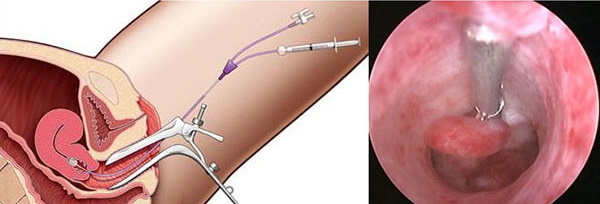
- Laparoscopy helps to remove tumors in the abdominal cavity, to carry out surgical treatment without cutting the abdominal cavity.
An operation (tubectomy) is prescribed during pregnancy outside the uterus to remove the fallopian tube with the ovum. If the course of the process is uncomplicated, then tubotomy is performed, in which it is possible to preserve the organs. Caesarean section is performed with premature placental abruption.
This operation can be performed at any stage of pregnancy. Also, for gynecological diseases, wedge-shaped ovarian resection, adnexectomy, oophorectomy are performed. With a severe type of endometriosis, pathological foci are surgically removed. Operations are prescribed for hernias (hernioplasty), appendicitis (the inflamed process is cut off).
Physiotherapy methods
Bursting pains in the lower abdomen are also treated with the help of physiotherapy methods. Ultrasound therapy is prescribed for pathologies of the genital organs, cystitis, urolithiasis. It is also used for acute inflammation and oncological processes.
Electrophoresis is prescribed for:
- vaginitis;
- endometriosis;
- colitis;
- cervicitis;
- cystitis;
- salpingo-oophoritis;
- endometritis.
But electrophoresis cannot be used for cancer, infectious processes in the acute phase. Magnetotherapy has the same indications, plus urolithiasis and algomenorrhea. UHF helps to cope with inflammation, constipation, colitis. It is prescribed for endometritis, cystitis and salpingitis.
Folk remedies
If the pain in the lower abdomen is not associated with diseases, and the cause was malnutrition or the accumulation of gas, then it is not necessary to resort to medications, you can use folk remedies. For example, make tea with chamomile, hawthorn, mint.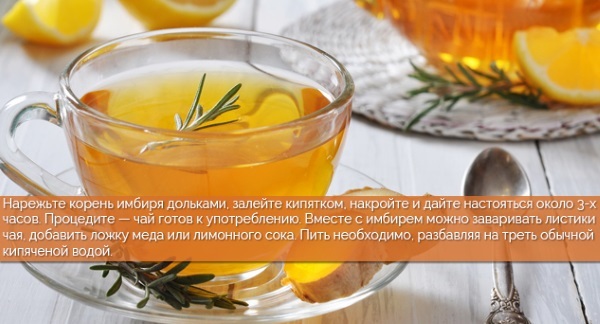
Or make a ginger root drink. It needs to be crushed and filled with a glass of boiling water. After half an hour, drink during the day in small sips. But medicinal herbs won't help right away. Such drinks are taken in long courses and more often in the form of auxiliary means.
Possible consequences and complications
If you do not immediately find out the cause of the pain in the lower abdomen and do not start timely treatment, then this can end in serious consequences and complications. During pregnancy, this often provokes a miscarriage or premature birth. Lack of treatment for failures in the menstrual cycle is dangerous for the development of infertility.
If the cause is an inflammation in the pelvic organs or peritoneum, then it can spread to healthy tissues and endanger a person's life. Deaths are caused by ruptures of the gallbladder, appendix, when their contents begin to fill the abdominal cavity.
Many diseases are accompanied by abdominal pain. But since the organs are interconnected, the pathological process can affect healthy ones. Lower abdominal pain may indicate cancer. In this case, symptoms appear at 3-4 stages, when a cure is often impossible, patients are, at best, prolonged life.
Bursting pain in the lower abdomen is sometimes a temporary physiological phenomenon (for example, in women) and does not require specific treatment, except for taking painkillers. But most often this indicates a serious illness, and if you delay the examination, irreversible changes may begin.
Video about lower abdominal pain
Malysheva about pain in the lower abdomen in women:

